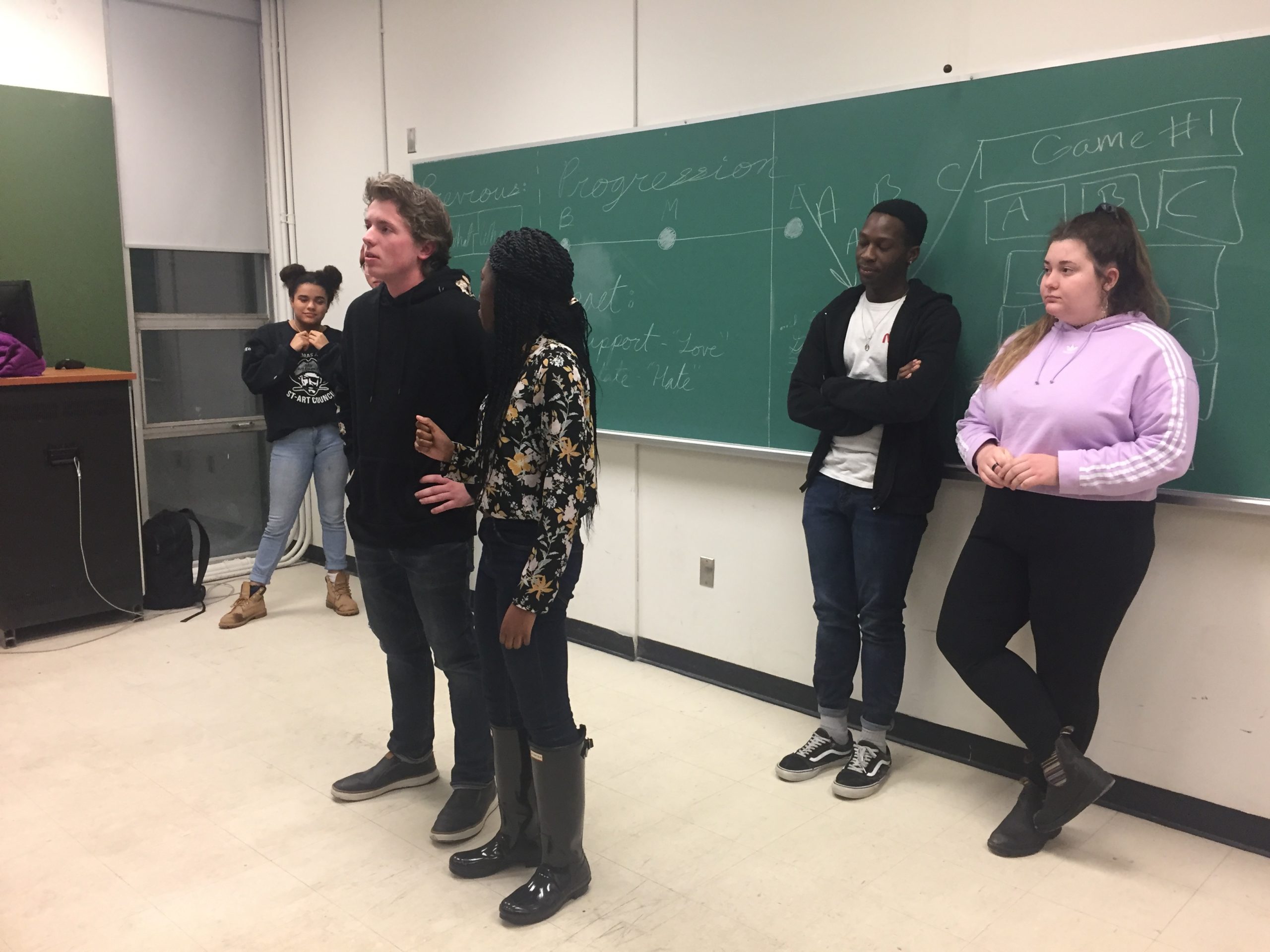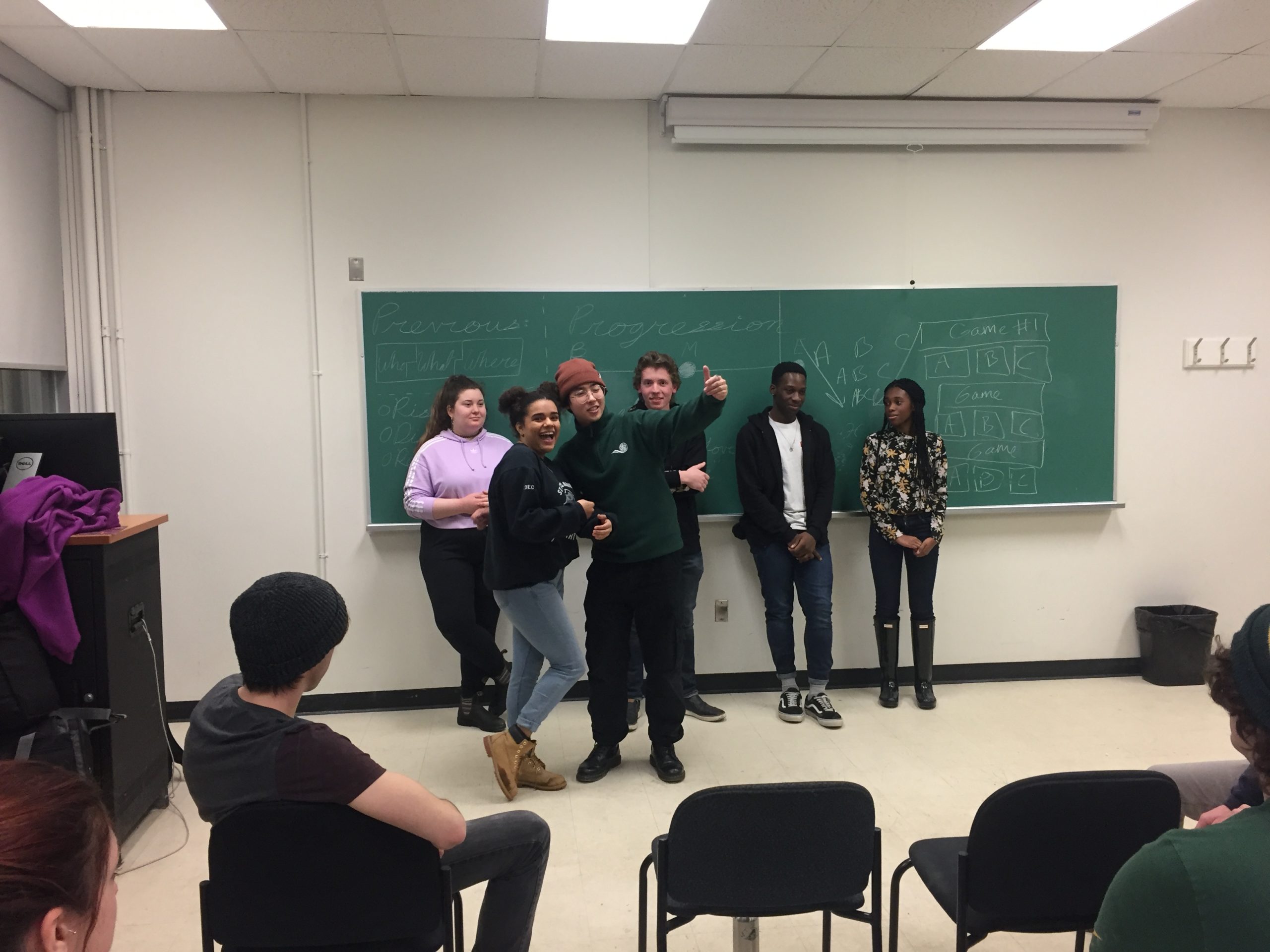What do a death in a lighthouse, a necromancer reanimating a caterpillar, spiked lemonade, and a sentient cactus have in common? They are all part of stories told by Carleton’s improv team—the Carleton Improv Association—and they’ve all been contributed by women.
Carleton’s improv team includes individuals from many backgrounds who want to participate in comedy. Especially notable is its inclusion of women within the greater comedy community.
With games like “Death in a Minute,” including scenes that must result in a character’s death within 60 seconds, and “Sex with Me,” in which participants compare intimate aspects of their lives to inanimate objects, Carleton’s improv team touts itself as a fun, welcoming environment for all, regardless of gender identity, race, or sexual orientation.
But comedy hasn’t always been inclusive of everyone. Leigha Purdy, an executive member of Carleton’s improv team, says that she has seen discrimination in other fields of comedy faced by several of her friends.
“There’s a bit less respect for a female comedian,” says Purdy. “I’m thinking of my friends [who have] done stand-up, and they get a bit more heckling, or more directed heckling, that I haven’t personally experienced but they have experienced because they’re women.”
Carleton’s improv team is taking strides to change that. Over the last three years, Purdy and her friends have seen a shift in the stereotypes faced by improvisers. “I don’t really think of improv as a gendered thing anymore,” says Purdy, “but there is a stereotype of this white, male, improviser.
“When we were all in first year—we’re all in third year now—it was this new thing of having more women in your team than men, and I think Carleton was one of the first clubs to have that ratio.”

Members of the team say that this is a part of a larger trend to include more women in improv, and in comedy as a whole.
Sawyer Ferreira is also an executive member of the team. She says that she has witnessed a recent shift in comedy to include more people of all backgrounds.
“I think improv as a general thing is getting more diverse every time I see it,” says Ferreira. “I think it has to do [with the fact that] you can be anything in an improv scene. I think more and more there tend to be more women involved, and more people of different backgrounds coming into it.”
Ferreira says that she barely notices a discrepancy in male to female inclusion anymore.
“That’s the most important thing to our club,” adds Ferreira. “Being inclusive, being a space where people of all levels of improv can come.”
Ferreira says that improv has been a great change of pace from her roles in high school theatre.
“Because I’m not white, I got cast in the same role over and over again, and what made me fall in love with improv is the fact that you could step on stage and be whatever you want. Within an improv space, gender [and] race, [don’t] really exist. We play inanimate objects frequently.”

“When I got to improv, the spontaneity and also the community of everybody in the club also helped to boost my confidence,” says Graham.
While a general trend in comedy used to be to poke fun at minority groups, that is no longer acceptable., according to Graham. Now, improv is all about inclusivity, he adds.
“Comedy can be derived from so much more than punching down at people. If you’re going to do anything, punch up.”
Carleton’s improv team has focused significantly on building each other up, rather than tearing each other down.
Purdy adds that pre-performance rituals help the team to be more inclusive. These rituals include a compliment circle, in which improvisers build each other up with compliments before going on stage.
“I think our biggest thing is support,” adds Purdy. “That’s one of the first things we teach you in improv is to support your scene partner, and I think we have a lot of that off stage too.”
Featured image provided by Maggie Harder.






